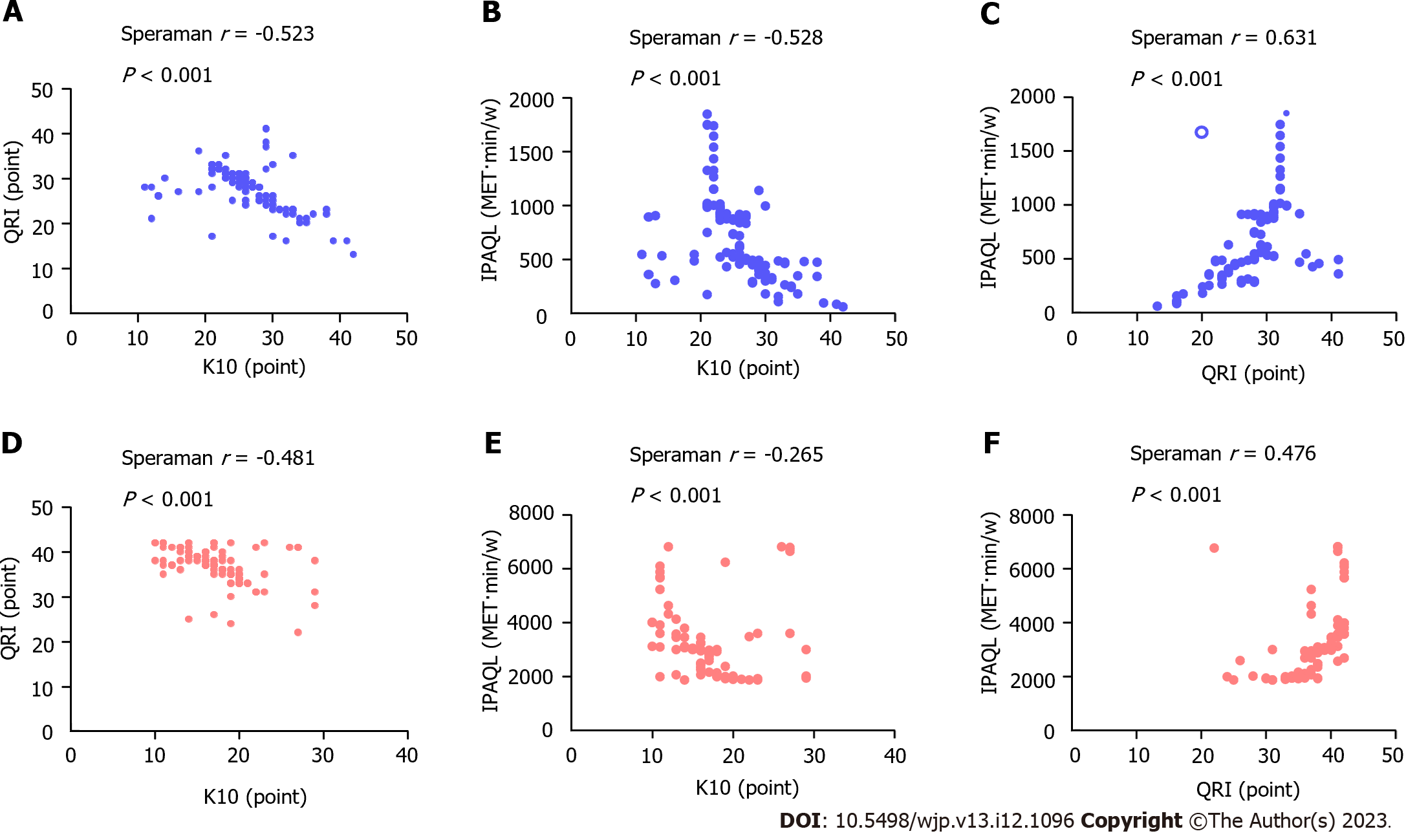Copyright
©The Author(s) 2023.
World J Psychiatry. Dec 19, 2023; 13(12): 1096-1105
Published online Dec 19, 2023. doi: 10.5498/wjp.v13.i12.1096
Published online Dec 19, 2023. doi: 10.5498/wjp.v13.i12.1096
Figure 3 Correlation analysis of patients’ psychological distress, intimate relationship satisfaction, and physical activity level.
A: Lower activity level group, the correlation between psychological distress [the Kessler Psychological Distress Scale (K10)] and intimate relationship satisfaction [the Quality of Relationship Index (QRI)]; B: Lower activity level group, the correlation between psychological distress (K10) and physical activity level [International Physical Activity Questionnaire-Long Form (IPAQL)]; C: Lower activity level group, the correlation between intimate relationship satisfaction (QRI) and physical activity level (IPAQL); D: Higher activity level group, the correlation between psychological distress (K10) and intimate relationship satisfaction (QRI); E: Higher activity level group, the correlation between psychological distress (K10) and physical activity level (IPAQL); F: Higher activity level group, the correlation between intimate relationship satisfaction (QRI) and physical activity level (IPAQL). K10: The Kessler Psychological Distress Scale; QRI: The Quality of Relationship Index; IPAQL: International Physical Activity Questionnaire-Long Form.
- Citation: Luo CY, Jiao P, Tu SM, Shen L, Sun YM. Mediating role of physical activity in the relationship between psychological distress and intimate relationships among stroke patients. World J Psychiatry 2023; 13(12): 1096-1105
- URL: https://www.wjgnet.com/2220-3206/full/v13/i12/1096.htm
- DOI: https://dx.doi.org/10.5498/wjp.v13.i12.1096









